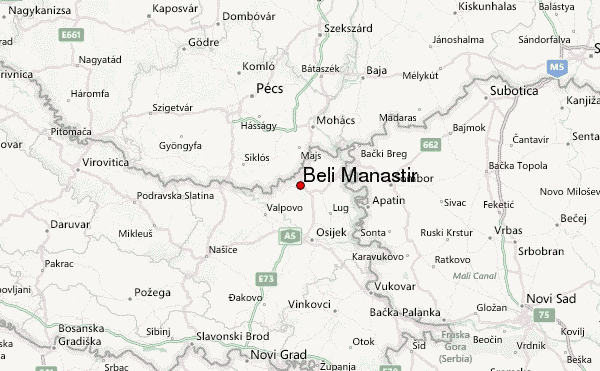Beli Manastir
Beli Manastir (Hungarian Pélmonostor ) is a town in the Croatian Baranja region. It counts 10,068 inhabitants (as of 2011) and is part of the Osijek - Baranja.
Beli Manastir means in German translates to " white monastery".
History
In 1227, the Hungarian Count Palatine Moys de Daro was on his property, build in the south of the Hungarian Kingdom in the place Pel, a monastery. So the village Pel Monostor was called (after the monastery) Later. Pel Monostor belonged to the Turkish occupation in the 16th and 17th centuries, the Kingdom of Hungary until 1920.
1920 were the location and southern Baranja to Yugoslavia. In 1923, the town was renamed. Pel Monostor was translated into Serbo- Croatian and was called from now on Beli Manastir.
After the 2nd World War, the city and the southern Baranja were incorporated into the Yugoslav republic of Croatia. After Croatia's 1991 and the war that followed independence, the city fell into the hands of the rebel Serbs. The non-Serbian population was expelled. In 1997, the city and the southern Baranja were returned by peace agreements in Croatia. The non-Serbian population could return.
Today, the city center and county town of Croatian Baranja.
Population
According to the census of 2011, the ethnic composition of the city are as follows:
- Croats = 5,750 ( 57.11 %)
- Serbs = 2,572 ( 25.55 %)
- Hungary = 801 ( 7.96 %)
- Roma = 301 ( 2.99% )
- German 85 (0.84 %)
- Slovenes = 67 (0.67 %)
- Montenegrins = 57 (0.57 %)
- Albanian = 47 (0.47 %)
- Macedonians = 21 (0.21 %)
- Bosniaks = 20 (0.20 %)
Structures
Transmitter with a 1966 built 202 meter high guyed lattice steel mast.



-Nastavno-sportska-dvorana.jpg)






